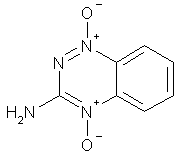Researchers are testing a novel anti-cancer drug which strikes only those tumor cells that resist standard treatments. Used in combination with conventional treatments, it could help physicians destroy all of a patient's tumor cells while sparing most other cells. "What we are doing is attacking a population of cells that has been a major stumbling block to curing solid tumors," explains J. Martin Brown, professor of radiation oncology, Stanford University School of Medicine.
The experimental drug, called tirapazamine, is lethal only to cells with very low concentrations of oxygen - a characteristic of many tumor cells that resist chemical and radiation treatments. Called hypoxic cells, they are low in oxygen because they lie farthest from the oxygen-carrying blood vessels that pass through the tumor. Such cells tend to multiply more slowly than others. This makes them resistant to the most commonly used cancer drugs because these medications target cells that are actively multiplying. Hypoxic tumor cells are highly resistant to radiation as well.
Though most cancer researchers recognize hypoxia's role in causing resistance to radiation treatment. few recognize the part it plays in drug resistance. Brown maintains. "By taking this approach. we're not only overcoming the effects of hypoxia - we're exploiting hypoxia. With this drug, hypoxic cells become an advantage. Instead of groaning if a tumor is hypoxic, you are actually happy if it's hypoxic. This is a totally novel approach."
The drugs side effects - primarily muscle cramps and nausea - can be controlled and are less serious than those of many standard cancer drugs, he points out. Because most of tirapazamine's side effects differ from those of standard chemotherapy drugs, physicians would be able to give cancer patients both treatments at the same time - delivering a double blow to tumors without intensifying the side effects.
COPYRIGHT 1996 Society for the Advancement of Education
COPYRIGHT 2004 Gale Group



